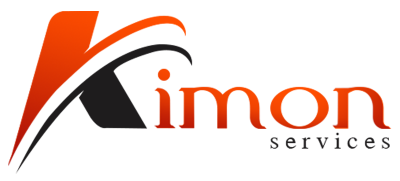Outsourcing has become a crucial part of many businesses’ strategies, enabling them to tap into global expertise, increase efficiency, and reduce costs. However, the key to successful outsourcing lies not just in choosing the right partner, but also in understanding and selecting the appropriate outsourcing pricing model. This decision can make a significant difference in how effective and beneficial the outsourcing arrangement will be for your business.
Outsourcing pricing models dictate the way costs are calculated and billed, and each model has its own set of advantages and potential drawbacks. A clear understanding of these models is essential for any organization looking to outsource its processes or services. It helps to align expectations, provides financial transparency, and sets the stage for a healthy, long-term business relationship.
The choice of an outsourcing pricing model can have a direct impact on your business’s bottom line. The right model can lead to significant cost savings, increased operational efficiency, and improved service quality. On the other hand, a poorly chosen model can result in unexpected costs, inefficient operations, and strained relationships with service providers.
In this comprehensive guide, we will explore various outsourcing pricing models, delving into the details of each to help you make an informed decision that best suits your business needs. Whether you’re a startup looking to outsource a single process or a large corporation considering a substantial outsourcing engagement, understanding these pricing models will be instrumental in maximizing the benefits of your outsourcing initiatives.
The Importance of Choosing the Right Outsourcing Pricing Model
The decision to outsource a business process or service is a significant one, often driven by a desire to reduce costs, increase efficiency, and focus on core business functions. However, the success of your outsourcing venture isn’t just about choosing the right partner—it’s also about choosing the right pricing model. This decision is a strategic one that can have a profound impact on the results you achieve.
Choosing the correct outsourcing pricing model can lead to numerous benefits. Firstly, it can drive greater efficiency by aligning the service provider’s efforts with your business objectives. Different pricing models incentivize service providers in various ways, which can directly impact their performance and productivity. For instance, some models incentivize speed and volume, while others reward innovation and problem-solving. By aligning the pricing model with your goals, you ensure that the service provider’s incentives match your own.
Secondly, the right pricing model can lead to significant cost savings. The cost structure of each pricing model is different, affecting the total cost of outsourcing. Some models offer more predictability in costs, while others provide more flexibility. Understanding these cost structures and how they align with your budget and financial goals can help you choose a model that offers the most value for your investment.
However, it’s equally important to understand the risks of choosing the wrong outsourcing pricing model. A mismatch between your business needs and the chosen model can lead to cost overruns, inefficiencies, and a strained relationship with your service provider. For example, a fixed-price model might seem attractive due to its predictability, but if the scope of the project changes frequently, this model could lead to disagreements and additional costs. Conversely, a time-and-materials model might provide flexibility, but without proper management and oversight, costs could spiral out of control.
Understanding Different Outsourcing Pricing Models
Outsourcing pricing models vary widely, and each comes with its unique set of benefits and challenges. Let’s delve into eight of the most common models to help you make an informed decision.
Staffing Model
In this model, a client contracts resources to a service provider for a specified period. Typically, this includes workspaces, desktops, Internet phones, and other tools necessary for operation. The client retains control of the project and may even send an in-house employee to train and supervise the outsourced staff. This model is commonly used in Business Process Outsourcing (BPO) operations. However, it might pose challenges with time zone differences and cultural barriers if the service provider is located in a different country
Advantages: This model allows clients to maintain direct control over the project and the flexibility to scale their staff up or down as needed.
Disadvantages: It may require more management effort from the client and can lead to increased costs if project timelines extend.
Fixed Price Model
A standard rate is set by the service provider for their services, charged monthly or annually, and includes charges for the tools and workspace. The Fixed Price Model can be adjusted based on factors such as salaries, incentives, and success targets. One downside to this model is that it does not account for changes in scope or unforeseen complexities that may arise during the project. There are several variants of the Fixed Price Model including Fixed Price with Economic Price Adjustment (FP EPA), Fixed Price with Incentive (FPI), and FPI Successive Target (FPI ST) which allow for more flexibility and incentive-based pricing
Advantages: The fixed price model offers cost predictability, making budgeting easier for clients.
Disadvantages: It lacks flexibility and can lead to cost overruns if the scope of the project changes.
Cost Reimbursable Model
This model, also known as the cost-plus model, sets limits on consumable expenses, then adds a percentage of it for profit. This model differs from the fixed price model as it agrees to a standard fee regardless of consumed expenses. This model can be combined with incentive pricing, but it may result in higher costs if not properly managed
Advantages: This model provides flexibility for unpredictable or fluctuating project scopes.
Disadvantages: It may lead to less cost predictability and requires more effort in tracking and validating expenses.
Time and Materials Model
This model, also known as cost and materials (C&M) model, is commonly used in long-term IT projects. It requires service providers to bid on a project and set a proposal based on the requirements of the client. A variation of this model, T&M with cap, allows the client to set a cap or upper limit on a certain project to control costs. This model provides flexibility but may lead to higher costs if the project scope is not well-defined
Advantages: This model offers flexibility for complex or evolving projects.
Disadvantages: It can lead to higher costs without proper management and oversight.
Consumption-based Model
Used primarily by cloud service providers, this model charges clients based on their actual usage within a month or a year. The main advantage is that clients pay only for what they use, providing flexibility in cost management. However, it can be unpredictable and hard to budget for in advance due to the variability in usage
Advantages: This model provides excellent flexibility, as clients only pay for what they use.
Disadvantages: It can lead to unpredictable costs if usage fluctuates greatly.
Profit-sharing Model
In this model, a percentage of the client’s profit is allocated to the service provider, serving as a reward for good work performance. While this model incentivizes good performance and fosters a stronger partnership between the client and provider, it might be difficult to quantify and attribute profits directly to the service provider’s efforts.
Advantages: This model incentivizes the service provider to contribute to the success of the business.
Disadvantages: It may not be suitable for businesses with unpredictable or low profit margins.
Incentive-based Model
Here, clients agree to send a bonus or commission to their service provider to increase their performance. It is usually applied to seasonal accounts and extra services such as 24/7 line and after-office hours service. While this model can boost performance, it may also lead to increased costs for the client.
Advantages: This model can incentivize higher performance and align the service provider’s goals with the client’s.
Disadvantages: It can lead to increased costs if not carefully managed.
Shared Risk-Reward Model
This model is often used in conjunction with other pricing models. The client and service provider share the risks and developments of their operation. By assigning responsibilities to the partner, risks associated with new technologies, processes, or models can be mitigated. However, this model requires a high level of trust and partnership between the client and the service provider.
Advantages: This model promotes a partnership approach and can lead to innovative solutions.
Disadvantages: It requires a high level of trust and transparency between the client and service provider.
Factors to Consider when Choosing an Outsourcing Pricing Model
Choosing the right outsourcing pricing model is a crucial step when deciding to outsource software development or other business processes. The pricing model you choose will significantly impact your budget, the control you have over the project, the quality of the deliverables, and the relationship you build with the service provider. Here are some important factors to consider:
Nature of the Project
The type of project you’re outsourcing has a major impact on the pricing model you should choose.
- If the project is well-defined with clear deliverables and a set timeline, a Fixed Price model might be the most appropriate.
- For long-term IT projects with variable requirements, a Time and Materials model might be more suitable.
- If you need to quickly scale up operations without substantial upfront investment, a Staffing model might be the best choice.
Risk Tolerance
The level of risk you are willing to accept will also influence your choice of pricing model.
- If you want to minimize financial risk, a Fixed Price model can provide predictability and control over costs.
- On the other hand, Profit-sharing and Shared Risk-Reward models can potentially yield higher returns but also come with a higher risk.
Control
Your desire for control over the project will also affect the pricing model you choose.
- If you want to maintain close oversight of the project, a Staffing model might be the best fit.
- For projects where you’re willing to give the service provider more autonomy, a Fixed Price or Time and Materials model could be more appropriate.
Flexibility
The level of flexibility you need in terms of scaling resources up or down will also impact the pricing model.
- If you need high flexibility, a Consumption-based model can be very attractive, as you only pay for what you use.
- In contrast, Fixed Price models offer less flexibility, as changes to the project scope can require renegotiating the contract.
Budget
Lastly, your budget will inevitably influence your choice of pricing model.
- If you have a limited budget, a Fixed Price or Cost Reimbursable model can help keep costs under control.
- If your budget is more flexible, models like Time and Materials or Profit-Sharing can offer the potential for higher quality deliverables or greater returns, at the cost of less predictability in expenses.
In conclusion, the best outsourcing pricing model depends on the specific circumstances of your project and company. It’s essential to carefully consider all these factors and understand the trade-offs involved in each pricing model to make an informed decision.
Conclusion
Selecting the right outsourcing pricing model is not a task to be taken lightly. The choice you make will ripple across your project, influencing everything from budgeting and project control to the quality of the deliverables and the nature of your relationship with the service provider. It is a foundational decision that lays the groundwork for the success or failure of your outsourcing endeavors.
Each pricing model carries its own benefits and risks, trade-offs and opportunities. A Fixed Price model might offer predictability and control, but it could lack the flexibility of a Time and Materials model. A Staffing model might grant you extensive oversight and scalability, but it doesn’t offer the potential for shared rewards that come with a Profit-Sharing or Shared Risk-Reward model. Understanding these nuances is key to making an informed decision.
Remember, there is no one-size-fits-all solution. The “best” model is the one that aligns most closely with your specific project requirements, risk tolerance, desire for control, flexibility needs, and budget constraints. As such, it’s crucial to thoroughly evaluate your unique business needs before making a decision.
In the ever-evolving world of business, flexibility and adaptability are key. Don’t be afraid to reassess your choice of pricing model as your business and its needs grow and change. The right outsourcing pricing model today might not be the right one tomorrow.
In conclusion, the power to shape the future of your business lies in your hands. By carefully considering your needs and circumstances, you can select the outsourcing pricing model that not only fits your present situation but also propels your business towards its future goals. Make the choice that’s right for you, and watch as your business reaps the rewards.
FAQs
What is an outsourcing pricing model?
An outsourcing pricing model is a structure that determines how a client will pay for outsourced services. It defines the terms of payment and takes into account factors such as the scope of work, complexity of tasks, duration of the project, and the level of risk involved. Different models exist to accommodate varying needs and preferences of businesses and service providers.
How does the nature of a project influence the choice of an outsourcing pricing model?
The nature of a project greatly influences the choice of an outsourcing pricing model. Projects with clearly defined scopes and timelines often fit well with a Fixed Price model. In contrast, projects with uncertain or evolving requirements may benefit from a Time and Materials model, which allows for flexibility in scope and payment as the project develops.
How does risk tolerance impact the choice of an outsourcing pricing model?
Risk tolerance affects the choice of an outsourcing pricing model as some models inherently involve more risk than others. For example, a Fixed Price model may put more risk on the service provider, while a Time and Materials model could pose more risk to the client. Businesses with high risk tolerance may opt for models that allow for greater flexibility, while those with low risk tolerance might prefer models with predictable costs.
How can the desired level of control over a project affect the selection of a pricing model?
Desired control level can affect the selection of a pricing model. If a client wants high control over the project, a Staffing model may be suitable as it allows the client to manage the outsourced team directly. On the other hand, if the client prefers to focus on outcomes rather than processes, models such as Fixed Price or Profit-Sharing could be more suitable.
How does the need for flexibility influence the choice of an outsourcing pricing model?
The need for flexibility influences the choice of an outsourcing pricing model as some models are more adaptable to changes than others. For example, Time and Materials and Consumption-Based models offer flexibility as they allow adjustments based on actual work or resource usage. Conversely, a Fixed Price model might be less flexible as it sets a predetermined price for a defined scope of work.
How can budget constraints influence the choice of an outsourcing pricing model?
Budget constraints can impact the choice of an outsourcing pricing model. Businesses with strict budgets may prefer Fixed Price models, as they provide predictable costs. In contrast, if a company has a flexible budget and values adaptability or innovation over cost predictability, it might opt for a Time and Materials or Cost Reimbursable model.
Can you switch between different outsourcing pricing models during a project?
Yes, it’s possible to switch between different outsourcing pricing models during a project, provided this is agreed upon by both parties. However, such a switch should be carefully considered as it can impact the project’s timelines, costs, and relationships between the client and the service provider.
What are some advantages and disadvantages of a Fixed Price model?
Advantages of a Fixed Price model include cost predictability and reduced financial risk for the client. However, it can be rigid in accommodating changes and may put more risk on the service provider. If project requirements are not clearly defined from the start, it could lead to disputes over scope and cost.
How does a Time and Materials model work?
In a Time and Materials model, clients pay for the actual time and resources used by the service provider. This model is flexible and can accommodate changes in project scope. It’s typically used for long-term projects with evolving or uncertain requirements.
What is the benefit of using a Staffing model in outsourcing?
The Staffing model offers the benefit of control to the client. In this model, the client contracts resources from the service provider for a specific period and directly manages these resources. This model is beneficial for businesses that want to maintain high levels of oversight and direction.






